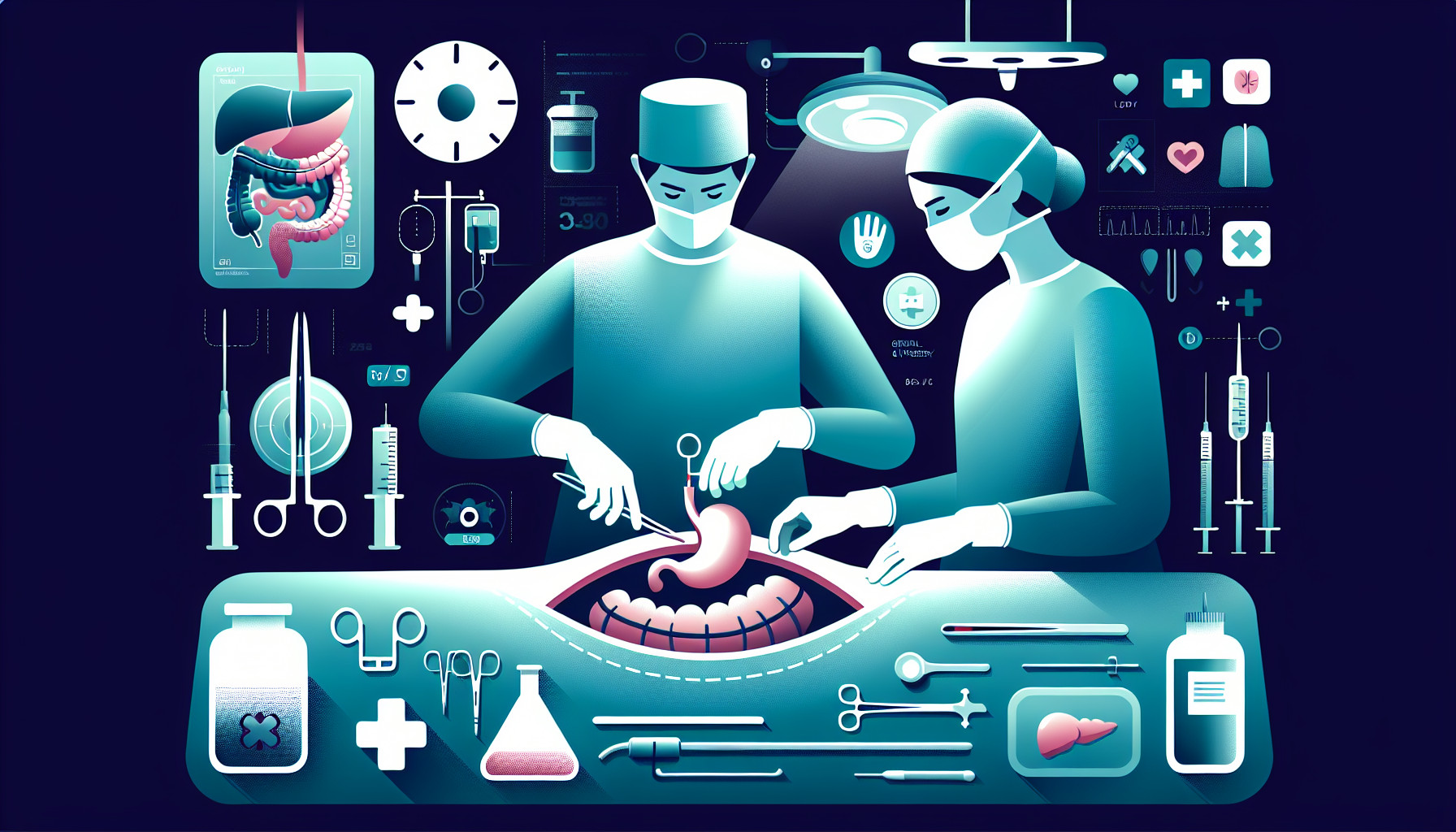Our Summary
This research paper discusses a method of surgery used to treat certain types of stomach and esophagus cancers. The procedure, known as laparoscopic proximal gastrectomy (LPG), is less invasive than a total removal of the stomach and has been growing in popularity for certain types of tumors. The study looked at six patients who underwent this procedure between 2013 and 2017. Most of these patients had early-stage adenocarcinoma, a type of cancer that forms in mucus-secreting glands, and one patient had a gastrointestinal stromal tumor.
The patients were on average 70 years old and all had significant other health conditions. One patient had to have their procedure converted to a traditional open surgery. All patients had successful surgeries with no remaining cancer at the edges of the surgical area and a thorough examination of the lymph nodes. Patients stayed in the hospital for about a week after surgery. Some complications included issues with the joining of the stomach and esophagus after surgery and one instance of significant acid reflux. After about a year, one patient’s cancer had returned. Three patients were alive with no signs of the disease, while two had died from other health issues.
In conclusion, the paper suggests that for certain patients, LPG is a safe alternative to total removal of the stomach, with similar outcomes in terms of cancer treatment and low side effects.
FAQs
- What is laparoscopic proximal gastrectomy (LPG) and when is it performed?
- What are the potential complications of laparoscopic proximal gastrectomy?
- How does the outcome of laparoscopic proximal gastrectomy compare to total gastrectomy?
Doctor’s Tip
A helpful tip a doctor might tell a patient about gastrectomy is to follow a strict postoperative diet plan to ensure proper healing and reduce the risk of complications such as anastomotic strictures or reflux. It is important to work closely with a dietitian to develop a meal plan that meets your nutritional needs while also being gentle on your digestive system. Additionally, regular follow-up appointments with your healthcare team are crucial to monitor your progress and address any concerns that may arise.
Suitable For
Patients who are typically recommended for gastrectomy include those with cancers of the distal gastroesophageal junction or the proximal stomach, as well as those with early-stage adenocarcinoma or gastrointestinal stromal tumors. Additionally, patients with significant comorbidities who may benefit from the perioperative benefits of proximal gastrectomy may also be recommended for the procedure. Carefully selected patients who are suitable candidates for laparoscopic proximal gastrectomy may also be recommended for this approach.
Timeline
Preoperative timeline:
- Patient is diagnosed with distal gastroesophageal junction or proximal stomach cancer.
- Patient undergoes preoperative work-up, including imaging studies and blood tests.
- Patient is evaluated by a multidisciplinary team to determine the most appropriate surgical approach.
- Patient is informed about the risks and benefits of proximal gastrectomy compared to total gastrectomy.
- Surgery is scheduled and patient undergoes preoperative preparation, including fasting and medication adjustments.
Postoperative timeline:
- Patient undergoes laparoscopic proximal gastrectomy procedure.
- Postoperatively, patient is monitored in the recovery room and transferred to a surgical unit.
- Patient gradually advances from a liquid to a soft diet as tolerated.
- Patient receives pain management and is monitored for complications such as infection or anastomotic leaks.
- Patient is discharged from the hospital once stable and able to tolerate oral intake.
- Patient follows up with the surgical team for wound care, diet instructions, and monitoring of oncologic outcomes.
- Patient may require additional interventions for complications such as anastomotic strictures or reflux.
- Patient continues long-term follow-up for surveillance of cancer recurrence and management of any late complications.
Overall, the timeline for a patient undergoing gastrectomy involves a thorough preoperative evaluation, surgical intervention, postoperative recovery, and long-term follow-up to ensure optimal outcomes.
What to Ask Your Doctor
- What are the potential benefits of undergoing a laparoscopic proximal gastrectomy (LPG) compared to total gastrectomy for my particular condition?
- What is involved in the preoperative work-up for LPG and what tests or evaluations will I need to undergo?
- Can you explain the key steps of the surgery, including any potential risks or complications that I should be aware of?
- How many LPG procedures have you performed and what is your experience and success rate with this technique?
- How long is the typical recovery time after LPG and what can I expect in terms of postoperative care and follow-up appointments?
- What are the potential long-term effects or complications of undergoing LPG, such as anastomotic strictures or reflux?
- Will I need any additional treatments or therapies after undergoing LPG, such as chemotherapy or radiation?
- What are the expected outcomes and survival rates for patients who undergo LPG for my specific type of cancer?
- Are there any dietary or lifestyle changes that I should make after undergoing LPG to optimize my recovery and overall health?
- Are there any support groups or resources available for patients who have undergone LPG that you would recommend?
Reference
Authors: Kukar M, Gabriel E, Ben-David K, Hochwald SN. Journal: J Surg Oncol. 2018 Jul;118(1):95-100. doi: 10.1002/jso.25123. Epub 2018 Jun 19. PMID: 29920681
